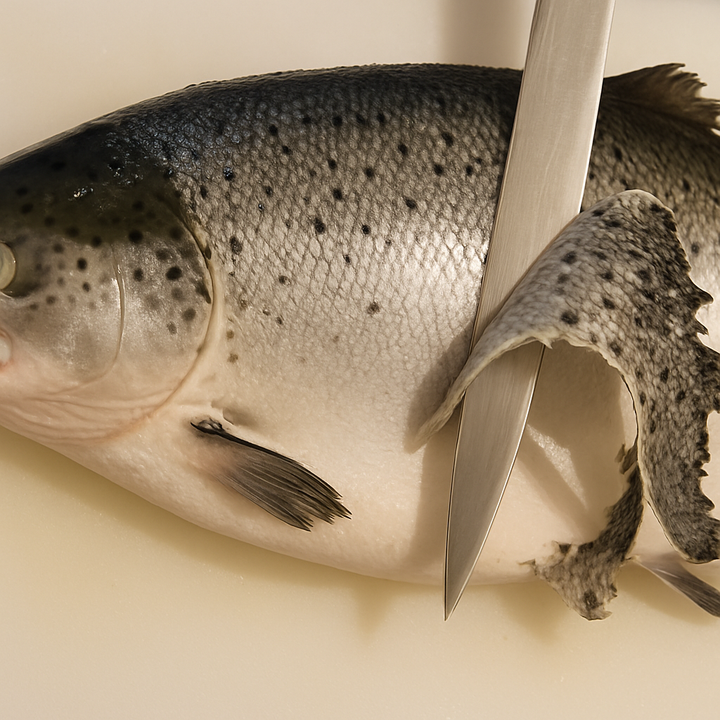Your Guide to Wagyu: Understanding Grades and Marbling
"Wagyu," "marbling," and "grading" are gateways to culinary prestige, embodying the zenith of fine dining through exceptional steak quality; understanding them is your passport to mastering the upscale Wagyu domain.

The terms "Wagyu," "marbling," and "grading" are frequently mentioned, particularly among steak enthusiasts who seek only the exceptional.
But what do they truly signify? They represent the pinnacle of culinary excellence, the finest of the fine, and the embodiment of upscale dining.
If mastering the Wagyu realm, inclusive of its grading and marbling intricacies, is on your agenda, then the guide below is indispensable. Here's your comprehensive dive into the world of Wagyu!
About Wagyu
At its core, Wagyu, translating to "Japanese cow" (where 'Wa' means Japanese and 'gyu' implies cow or beef), epitomizes a cherished culinary tradition.
However, with its burgeoning demand, Wagyu breeding has now extended beyond Japan to regions like Australia and the United States.
Here, leveraging top-notch Japanese cow genetics, farmers adopt unique methodologies to maintain Wagyu's revered quality, while the distinct soil, climate, and vegetation of these regions subtly shape the taste and texture of this exquisite beef variety.
Variations of Wagyu
Unless you journey to Japan, encountering authentic Wagyu might be a rare delight. To discern the Wagyu blend on your plate, here are some variations:
- Fullblood Wagyu: This represents the pure essence of Wagyu, boasting a 100% genetic purity with no crossbreeding involved.
- F1 (50% Wagyu): Embarking on the crossbreeding voyage, F1 showcases at least 50% Wagyu genetic material, achieved by merging Fullblood Wagyu with another breed.
- F2 (75% Wagyu): Ascending the Wagyu ladder, F2 embodies 75% or more Wagyu genetics, a result of crossbreeding Fullblood Wagyu with a crossbred Wagyu F1.
- F3 (87.5% Wagyu): Nearing the pinnacle, F3 harbors over 87% Wagyu genetic content, born from the union of Fullblood Wagyu and a crossbred Wagyu F2.
- F4 (93.75% Wagyu): Almost at the zenith, F4 flaunts more than 93% Wagyu genetics, created by crossbreeding Fullblood Wagyu with a crossbred Wagyu F3.
What's the takeaway? The availability of Wagyu has notably expanded, thanks to these diverse genetic admixtures.
Under the umbrella of several esteemed brands, indulging in sublime Wagyu is no longer solely a Japanese prerogative, paving the way for a global Wagyu rendezvous.
Marbling Defined
Marbling, the delicate web of fat woven within muscle fibers, is a hallmark of Wagyu beef, attributing to its tender, juicy allure and unique flavor.
Unlike others, Wagyu excel in intramuscular fat deposition, elevating its marbling which significantly impacts its grade and price.
Firstlight Wagyu, grazed on verdant pastures, showcase a finer, galaxy-esque marbling compared to the bold patterns in grain-fed counterparts.
This pastoral rearing not only imparts a nuanced taste but also enriches the meat with omega-3 and wholesome monounsaturated fats.
Worldwide beef grading systems scrutinize marbling to reflect meat quality, aiding consumers in selecting prime cuts for an exquisite culinary journey.
Japanese Beef Grading System
To navigate through this epicurean journey, it's essential to understand the grading system that underscores the quality and authenticity of Wagyu beef from Japan.
This grading system, a hallmark of precision and rigor, employs a blend of alphabets and numbers to categorize the superiority of this luxurious meat.
Grades of Wagyu are pivotal and should ideally be disclosed on the menu or upon inquiring with the culinary maestro or server at your dining establishment.
The grading spectrum is bifurcated into Yield Grade and Quality Grade, each signifying distinct aspects of the beef.
Yield Grade
Yield grade is a measure of the cutability of the Wagyu cut, with Grade A bestowed upon cuts exhibiting a 72% or higher percentage yield, while Grades B and C mark lesser percentages.
- Grade A: Transcends the standard
- Grade B: Meets the standard
- Grade C: Falls below the standard
Quality Grade
The allure of Wagyu beef predominantly lies in its Quality Grade, which is a meticulous assessment across four dimensions:
- The marbling that appears as thin veils or specks of fat.
- The color and vibrancy of the beef portraying its freshness and appeal.
- The firmness and texture inviting a tactile exploration.
- The color, sheen, and caliber of the fat, a visual feast.
Each of these categories receives a numerical grade from 1 to 5, mapping the journey from 'Poor' to 'Excellent'.
- 5: The epitome of excellence
- 4: A good gourmet choice
- 3: The middle-ground of average
- 2: A notch below the average
- 1: A poor show on the palate
The pinnacle of Wagyu quality is encapsulated in the esteemed A5 grade. The Japanese grading system demands uniform excellence across all criteria to award this status.
For instance, a beef scoring 'A' for yield and '5' in three quality measurements but '4' in one, settles at A4. This rigorous grading assures that an A5 Wagyu signifies unmatched quality in every aspect, offering a luxurious culinary adventure.
Grading Dimension Beyond A5 Wagyu
A5 Wagyu stands as a hallmark of high-quality beef, yet there's a realm beyond which distinguishes the exceptional from the transcendental. This finer distinction is orchestrated through the Beef Marble Score (BMS), a meticulous grading of the marbling, or ‘sashi’ as it's elegantly termed in Japanese.
The BMS scales from 1 to 12, offering a more nuanced lens to appreciate the exquisite marbling that Wagyu is revered for.
This goes to underscore the profound significance marbling holds in elevating the Wagyu experience, adding a layer of refinement in grading that discerns the phenomenal from the simply outstanding.
Through the BMS, the majestic dance of marbling in the beef is celebrated, refining the way connoisseurs perceive and indulge in the luxurious narrative of Wagyu.
The Quality scores stretch from 1 to 12, encapsulating all aforementioned factors like marbling and coloration. The final grade, designated from 1 to 5, correlates with the quality score as outlined:
- Poor (Quality score of 1)
- Modest (Quality score of 2)
- Mid-range (Quality score of 3 or 4)
- Superior (Quality score of 5 to 7)
- Excellent (Quality score of 8 to 12)
With the inclusion of the Beef Marble Score (BMS), the Wagyu grading ascends to a zenith of A5-12, a grade that resides in the realm of the rare and extraordinary.
To draw a comparison, the pinnacle of marbling grade in the US, dubbed as USDA Prime, aligns with a BMS score of around 4.
Most domestically raised Wagyu or hybrid breeds tend to fall within the BMS range of 6 to 9. On the other hand, the famed Kobe beef often surpasses these, typically scoring 10 or even higher on the BMS scale.
This further elucidates the exceptional quality and rarity that an A5-12 Wagyu grade embodies, setting a gold standard in the gourmet world.
Aussie Grading
The Australian Wagyu grading echo bears a close resemblance to its Japanese counterpart, albeit with a slight deviation in the quality scoring cap, which halts at 9 instead of 12.
The quality grade continuum from 1 to 5 remains intact, but the 'Excellent' accolade is reserved for scores of 8 and 9 only. Thus, a Grade A5 meat in Australia mirrors the prestige of an A5 score in the Japanese Wagyu grading.
American Grading Framework (USDA)
Managed by the United States Department of Agriculture (USDA), the American grading scheme simplifies the evaluation process, covering all beef varieties, not just Wagyu.
It categorizes beef into three primary tiers: Prime (the pinnacle), Choice, and Select. However, this streamlined approach provides a less detailed glimpse into the nuances of marbling.
A USDA Prime designation could embody a marbling score anywhere between 5 to 9, or potentially soaring up to 12, mirroring the superior grades observed in Japanese or Australian grading doctrines.


